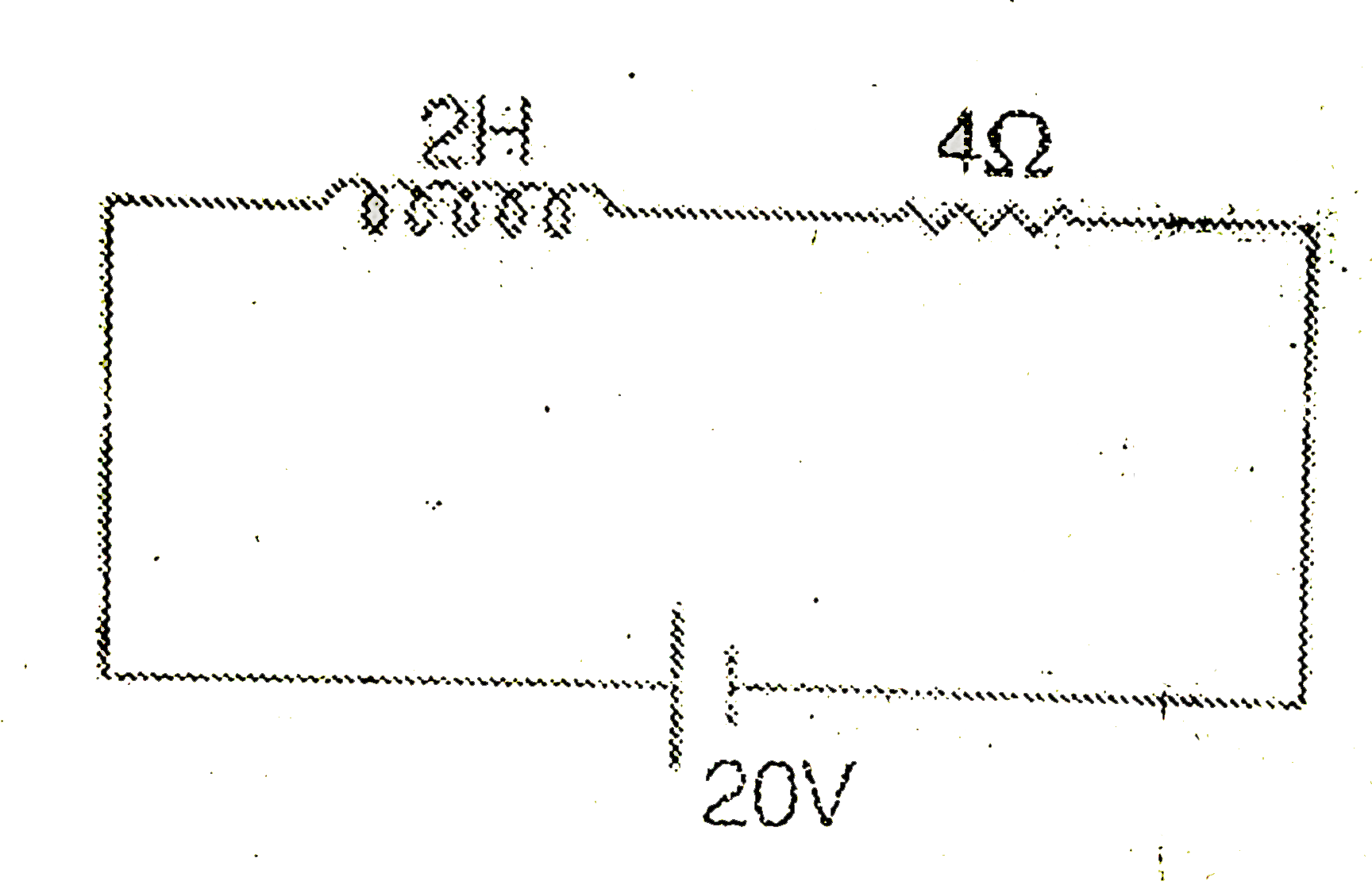A moving coil voltmeter is generally used to measure the potential difference across a conductor of resistance 'r' carrying a current i. The resistance of voltmeter is R. For more correct measurement of potential difference
R=r
R>>r
R<<r
R=0
The correct Answer is:2
To solve the problem regarding the correct measurement of potential difference using a moving coil voltmeter, we can follow these steps:
1. Understanding the Setup:
- We have a conductor with resistance r carrying a current i.
- A moving coil voltmeter with resistance R is connected in parallel to the conductor to measure the potential difference across it.
2. Potential Difference in Parallel Connection:
- Since the voltmeter is connected in parallel with the conductor, the potential difference across the voltmeter (V) is the same as the potential difference across the conductor.
- Therefore, we can write:
V=I1⋅R=I2⋅r
- Here, I1 is the current through the voltmeter and I2 is the current through the conductor.
3. Current Ratio:
- From the above equation, we can express the ratio of the currents:
I2I1=Rr
4. Condition for Accurate Measurement:
- For the voltmeter to measure the potential difference accurately, we want most of the current i to flow through the conductor rather than the voltmeter. This means:
I2≫I1
- This implies:
I2I1≫1
- Substituting from our earlier expression, we have:
Rr≫1
- This means that the resistance of the voltmeter R should be much greater than the resistance of the conductor r:
R≫r
5. Conclusion:
- Therefore, for a more accurate measurement of potential difference, the resistance of the voltmeter R should be much greater than the resistance of the conductor r.
Final Answer:
The correct condition for more accurate measurement of potential difference is:
R≫r
- We have a conductor with resistance r carrying a current i.
- A moving coil voltmeter with resistance R is connected in parallel to the conductor to measure the potential difference across it.
- Since the voltmeter is connected in parallel with the conductor, the potential difference across the voltmeter (V) is the same as the potential difference across the conductor.
- Therefore, we can write:
V=I1⋅R=I2⋅r
- Here, I1 is the current through the voltmeter and I2 is the current through the conductor.
- From the above equation, we can express the ratio of the currents:
I2I1=Rr
- For the voltmeter to measure the potential difference accurately, we want most of the current i to flow through the conductor rather than the voltmeter. This means:
I2≫I1
- This implies:
I2I1≫1
- Substituting from our earlier expression, we have:
Rr≫1
- This means that the resistance of the voltmeter R should be much greater than the resistance of the conductor r:
R≫r
- Therefore, for a more accurate measurement of potential difference, the resistance of the voltmeter R should be much greater than the resistance of the conductor r.
The correct condition for more accurate measurement of potential difference is:
R≫r
Topper's Solved these Questions
- MOVING CHARGES & MAGNETISM BOOK - VMC MODULES ENGLISHCHAPTER - MOVING CHARGES & MAGNETISM EXERCISE - PRACTICE EXERCISE 9
5 Videos
- MOVING CHARGES & MAGNETISM BOOK - VMC MODULES ENGLISHCHAPTER - MOVING CHARGES & MAGNETISM EXERCISE - PRACTICE EXERCISE 10
5 Videos
- MOVING CHARGES & MAGNETISM BOOK - VMC MODULES ENGLISHCHAPTER - MOVING CHARGES & MAGNETISM EXERCISE - PRACTICE EXERCISE 7
5 Videos
- Motion in Two DimensionsBOOK - VMC MODULES ENGLISHCHAPTER - Motion in Two DimensionsEXERCISE - MCQ
2 Videos
- PROPERTIES OF MATTERBOOK - VMC MODULES ENGLISHCHAPTER - PROPERTIES OF MATTEREXERCISE - JEE Advanced (Archive) Level - 2 (MATRIX MATCH TYPE)
1 Videos
Similar Questions
Calculate the potential difference required across a conductor of resistance 5 Ω to pass a current of 1.5 A through it.
View SolutionThe device used for measuring potential difference is known as:
View SolutionHow are the potential difference (V), current (I) and resistance (R) related ?
View SolutionA voltmeter of resistances 400(Ω)is used to measure the potential difference across the 100(Ω)resistor in the circuit shown in figure.(a) What will be the reading of the voltmeter ?(b) What was the potential difference across 100(Ω)before the voltmeter was connected ?

View SolutionHow is voltmeter connected in the circuit to measure potential difference between two points ?
View SolutionIn the given circuit, if the potential difference across the internal resistance r1 is equal to E, then the resistance R is equal to:

View SolutionIf the potential difference across the ends of a conductor is doubled, the current flowing through it gets
View SolutionTo measure a potential difference across a resistor of resistance RS, a voltmeter of resistance Ry is used. To measure the potential with a minimum accuracy of 95%, then
View SolutionAccording to this diagram , the potential difference across the terminals is ( internal resistance of cell =r)

View SolutionIn the L-R circuit as shown in figure, potential difference across the resistance at some instant is 4 V. Then

View Solution
